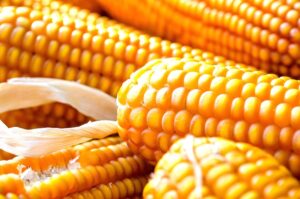
Corn became the most exported commodity in January-February 2025, with a share of 26.5% in agricultural exports and 16% of Ukraine’s total exports, the press service of the State Customs Service (SCS) reported on Telegram.
The agency noted that in January-February 2025, 4.7 million tons of corn were supplied to foreign markets, which amounted to $982 million in monetary terms.
The top five importers of Ukrainian corn are Spain – 933 thsd tonnes, Italy – 725 thsd tonnes, Turkey – 639 thsd tonnes, Egypt – 593 thsd tonnes and the Netherlands – 514 thsd tonnes.
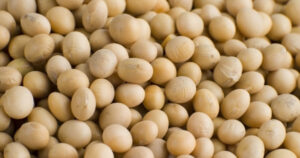
In 2025, Agrotrade Agroholding will plant 24.32% of its acreage under corn, given its profitability in 2024, and refused to grow spring wheat, the company’s press service reported on Facebook.
“Last season, favorable weather conditions allowed us to minimize the cost of corn processing. This year, we expect high profitability of the crop again, so we have increased the area under its sowing. Traditionally, we allocate significant areas for soybeans, as they show consistently high profitability. At the same time, this year we refused to plant spring wheat, as we sowed enough winter wheat, so we focused on other crops,” said Oleksandr Ovsyanyk, Director of Agrotrade’s Agricultural Department.
In 2025, the agroholding allocated 25.2% of its acreage for winter wheat, 24.32% for corn, 23.58% for soybeans, 17.84% for sunflower, 7.4% for winter rapeseed, 1.02% for mustard, 0.56% for industrial hemp, etc.
“We continue to work to optimize the structure of crops for sustainable development and efficient use of the land bank,” the agricultural holding assured.
Agrotrade Group is a vertically integrated holding company with a full agro-industrial cycle (production, processing, storage and trade of agricultural products). It cultivates over 70 thousand hectares of land in Chernihiv, Sumy, Poltava and Kharkiv regions. The company’s main crops are sunflower, corn, winter wheat, soybeans and rapeseed. It has its own network of elevators with a one-time storage capacity of 570 thousand tons.
The group also produces hybrid seeds of corn and sunflower, barley, and winter wheat. In 2014, a seed plant with a capacity of 20 thousand tons of seeds per year was built on the basis of Kolos seed farm (Kharkiv region). In 2018, Agrotrade launched its own brand Agroseeds on the market.
The founder of Agrotrade is Vsevolod Kozhemiako.
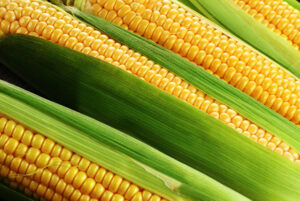
“Kernel, one of Ukraine’s largest agricultural holdings, intends to strategically adjust its crop mix for the 2025 harvest during the spring sowing campaign to align with its more sustainable practices that were maintained before the full-scale war in Ukraine.
According to the quarterly report published on the company’s website on Friday, Kernel plans to allocate about 168 thousand hectares for corn, which is twice as much as in the 2024 season and will account for 49% of its total production area.
At the same time, the agroholding plans to reduce sunflower acreage by 34%, to 44 thou hectares (or 13% of the crop structure). The agricultural holding explained this decision by further optimizing land use and restoring long-term agronomic sustainability.
“In 2025, Kernel will also reduce its soybean acreage to 27 thou hectares, while a year earlier it had 72 thou hectares under soybeans.
“As of the date of the report, winter crops – including 95 thou hectares of winter wheat and 3.45 thou hectares of rapeseed – are in generally good condition, with no significant risks beyond the usual seasonal factors at this stage,” the agricultural holding summarized.
Kernel is the world’s largest exporter of sunflower oil, one of the largest producers and sellers of bottled oil in Ukraine. In addition, it is engaged in the cultivation and sale of agricultural products.
In FY2024, Kernel’s net profit decreased by 44% compared to FY2023 to $167.95 million, while revenue increased by 4% to $3.581 billion and EBITDA decreased by 30% to $381 million.
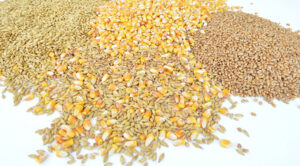
The U.S. Department of Agriculture (USDA) has adjusted its forecast for Ukraine’s wheat exports for the 2024/25 marketing year (MY, July 2024-June 2025) and lowered it by 0.5 million tons to 15.5 million tons, and corn by 1 million tons to 22 million tons.
The updated USDA forecast for February indicates that in 2024/25 MY wheat and corn production in Ukraine will remain at 22.9 mln tonnes and 26.5 mln tonnes, respectively.
At the same time, a slight increase in wheat production and consumption is expected, however, according to USDA, trade volumes and ending stocks will be lower. Accordingly, the forecast for global wheat production was increased by 0.6 million tons to 793.8 million tons, due to increased production in Kazakhstan (+0.6 million tons, to 18.6 million tons) and Argentina (+0.2 million tons, to 17.7 million tons).
Global wheat consumption will also increase by 1.8 mln tonnes to 803.7 mln tonnes due to higher use of feed grains and transitional residues in the EU, Kazakhstan, Thailand and Ukraine.
At the same time, the global wheat trade will decrease by 3 million tons to 209 million tons due to the decline in exports by the EU (-1.0 million tons, to 28.0 million tons), Mexico, Russia (-0.5 million tons, to 45.5 million tons), Turkey and Ukraine (-0.5 million tons, to 15.5 million tons). The largest reduction is expected in China – by 2.5 million tons, to 8.0 million tons, which will be the lowest imports in the last five years, although last year this country was the world’s leading supplier of wheat.
The same picture is expected for the world ending stocks in 2024/25 MY, which, according to the updated forecast, will decrease by 1.3 mln tonnes to 257.6 mln tonnes, due to the reduction in China, partially offset by the increase in stocks in Russia, Kazakhstan and Ukraine.
In 2024/25 MY, the global corn market is expected to decline in all indicators. The global corn production is expected to decline by 1.9 mln tonnes to 1 bln 212.5 mln tonnes, mainly due to Argentina (-1.0 mln tonnes, to 50.0 mln tonnes) due to lower yields as a result of heat and Brazil (-1.0 mln tonnes, to 126.0 mln tonnes) and slow sowing.
The main changes in the world corn trade are related to the decrease in the forecasted corn exports from Brazil (-1.0 million tons, to 46.0 million tons), Ukraine (-1.0 million tons, to 22.0 million tons) and South Africa. External ending stocks of corn for 2024/25 MY were reduced by 3 million tons to 290.3 million tons.
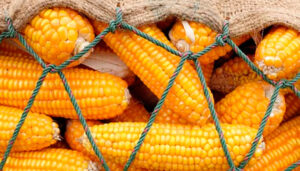
Ukraine exported almost 1.7 million tons of corn as of December 23, and by the end of the month the total volume will exceed 2 million tons, despite problems with shipments at the beginning of the month that slowed down the pace of exports, according to the analytical cooperative “Start”, created within the framework of the All-Ukrainian Agrarian Council.
According to analysts on the UAC’s Facebook page on Thursday, corn prices are stable at $205-207 per ton on a CPT basis. They predict that corn has the potential to reach $210-215/ton in January. The key factor that may affect further price growth is weather conditions in Brazil and Argentina.
“The corn market is in a kind of “golden period”. In January, any importer who wants to receive supplies has to turn to Ukraine, as the US corn is already sold out. This creates conditions for sellers to dictate the price. However, it is important to remember that in February-March we may face competitive pressure on the European market due to cheaper U.S. corn,” the experts said.
They pointed out that Ukrainian corn remains the main player on the European market, while the US actively exports to Latin America and Mexico. However, the price difference between Ukrainian and American corn on the European market is about $10 in favor of American products.
According to forecasts, in January the market will be sensitive to news about the sowing campaign of the second harvest in Brazil and the condition of crops in Argentina, where there are already problems with moisture.
“Over the past 10 years, only twice the corn market has been stable in January and February without significant price fluctuations. Therefore, the probability of getting higher prices during this period is quite high. But in April-May, corn may become a scarce commodity, which will again create preconditions for price growth,” Pusk summarized.
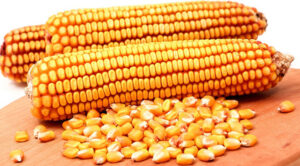
In November 2024, Turkey overtook Spain, the unchallenged leader, in imports of Ukrainian corn, Dmytro Solomchuk, MP, member of the Committee on Agrarian and Land Policy, said on Facebook.
“In terms of physical weight, the figures are significant – 2.5 million tons of exports in November, of which 620 thousand tons were bought by Turkey,” he wrote.
The MP noted that in November, a total of $2.3 billion worth of agricultural products were exported, of which only $512 million was corn.
As reported, on October 10, 2024, Turkey introduced quotas on imports of 1 million tons of corn and reduced the duty to 5% by the end of December 2024.